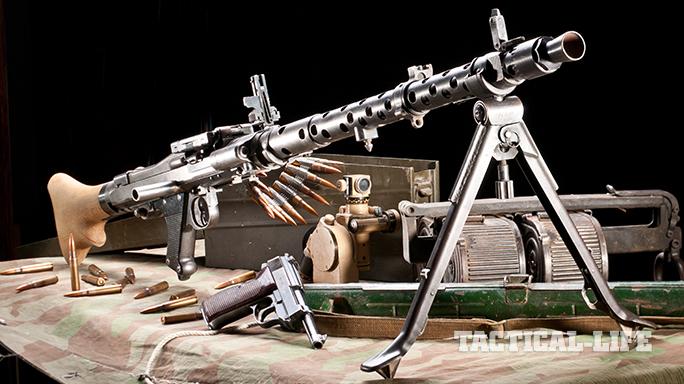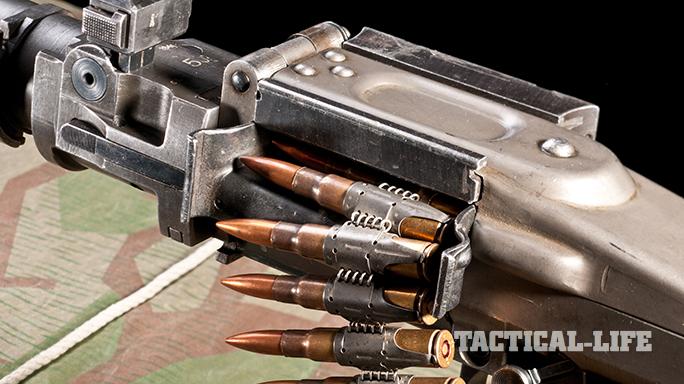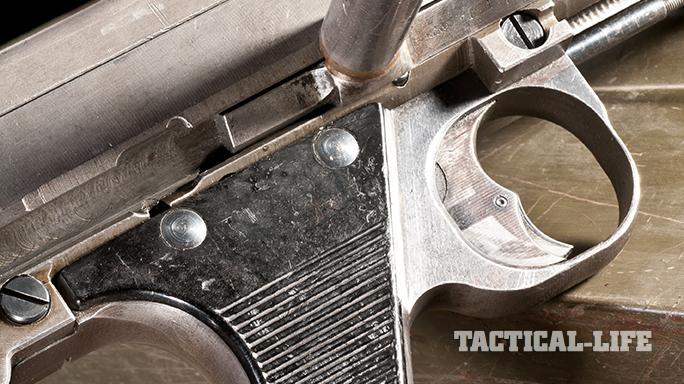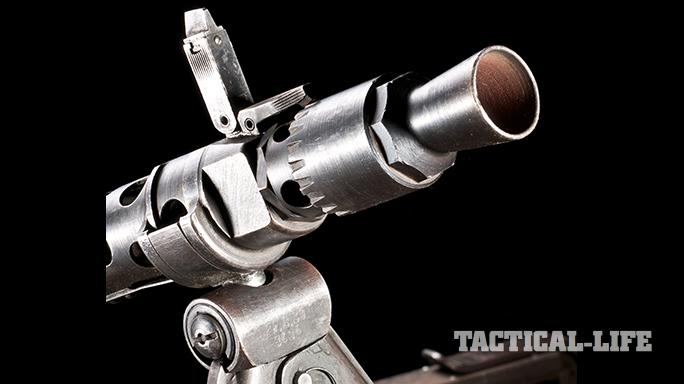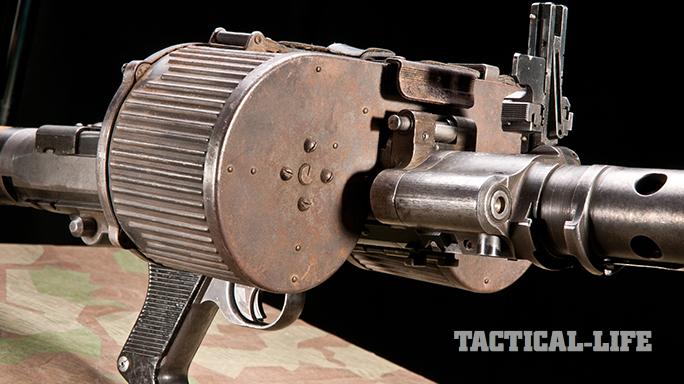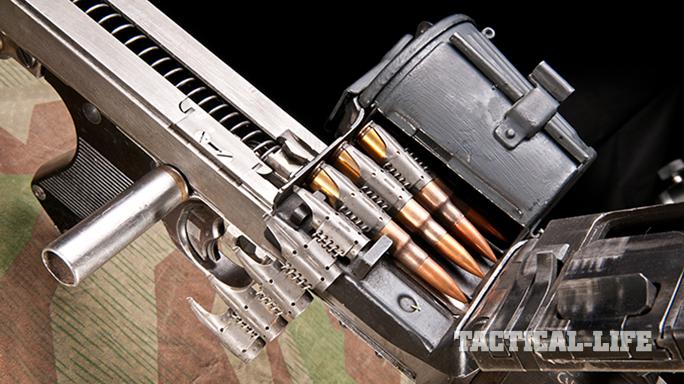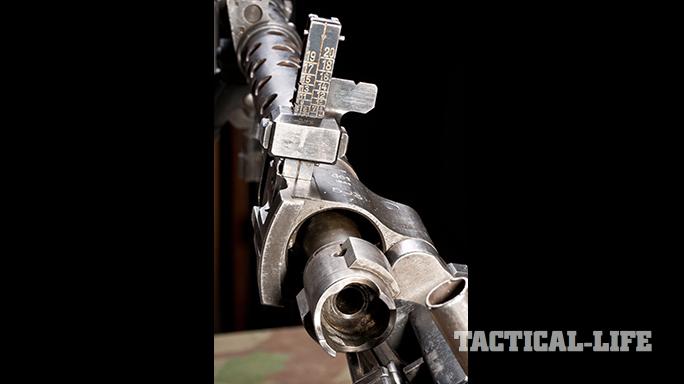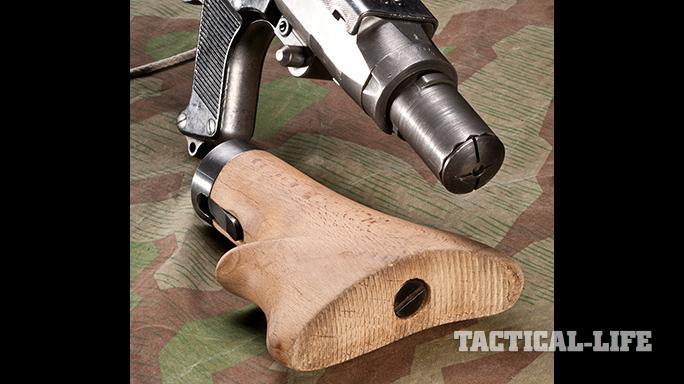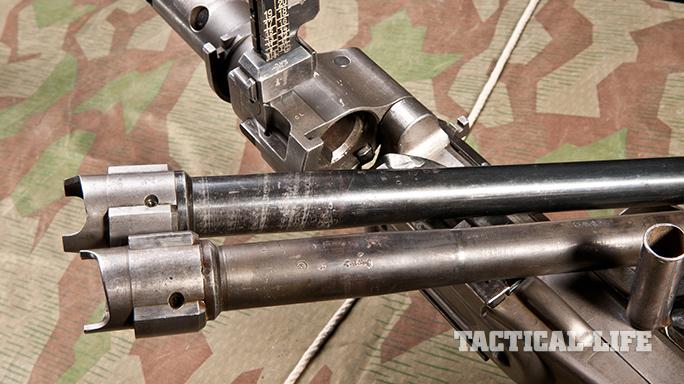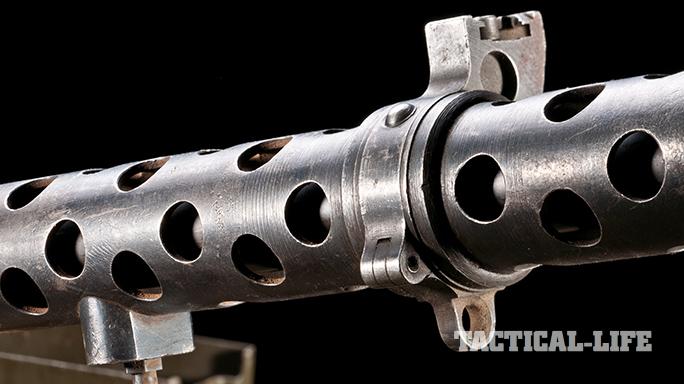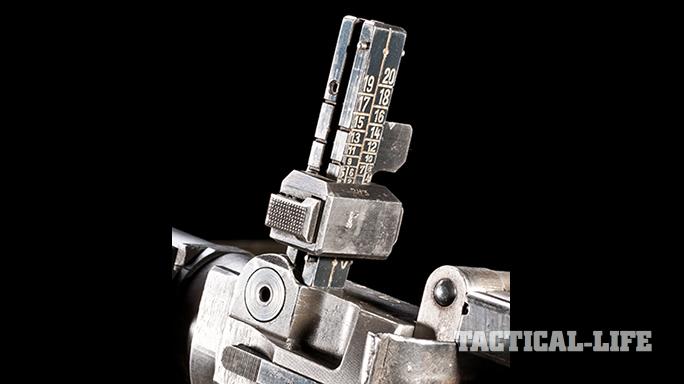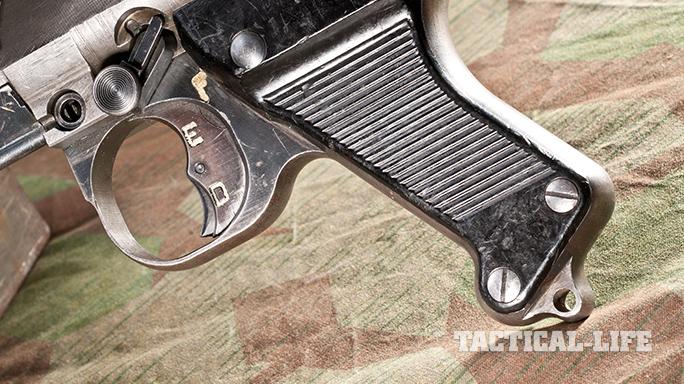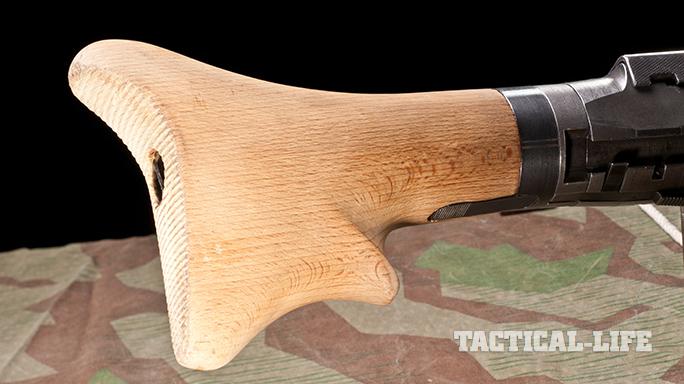In the years before World War II, the Germans developed and produced some impressive war implements. One of these was the MG34, a general-purpose machine gun that was truly a modern marvel of its day.
Whenever you watch film footage of the German army in action during World War I, you can’t help but wonder how any Allied soldiers survived a bayonet charge across a no-man’s land filled with barbed wire and muddy shell craters while being bombarded by artillery, poison gas and a trench line full of German machine guns. By 1918, the German army had started using the MP18, the first pistol-caliber submachine gun used in combat. You can only imagine the contribution the MP18 could have made to the German war effort if the reliable submachine gun had been available in large quantities earlier in the war.
These points are important because the Germans knew from experience that fast-firing belt-fed machine guns were incredibly effective in producing mass casualties on the battlefield. The Germans also knew that squads of stormtroopers armed with submachine guns and hand grenades were a formidable force against enemy infantry and defensive positions.
Advertisement — Continue Reading Below
Lightning-Fast Attacks
The next step in German weapons development was finding a way to combine the systems and use belt-fed machine guns to support a fast-moving assault force armed with an array of small arms, including submachine guns. The problem was figuring out how to make a belt-fed machine gun light enough to be carried by infantry troops.
- RELATED STORY: MP40 – Germany’s Influential 9mm Submachine Gun
In other words, although the Germans knew they would always need to defend fixed positions with medium and heavy belt-fed machine guns, they also saw the need for a lighter general-purpose machine gun that could support ground-fighting and mechanized units. This seems evident when you examine the evolution of German machine guns from WWI until the outbreak of WWII, including the use of the MG08/15, the MG13, the MG15 aircraft machine gun, the MG30 and eventually the MG34.
One of the best examples of Germany’s interest in making machine guns light enough to be more easily transported by assault troops involves the transformation of the MG08 to the MG08/15, a belt-fed machine gun that was modified to weigh one-third less than its predecessor. Although carrying a modified, water-cooled MG08/15 that weighed 50-plus pounds when assembled and loaded was far from ideal, its development was a giant step forward in the evolution of German general-purpose machine guns.
Advertisement — Continue Reading Below
Force Multiplier
The MG34 is a recoil-operated, air-cooled, select-fire machine gun. It’s capable of firing 800 to 900 rounds per minute at an effective range of 2,000 meters. It could be loaded with non-disintegrating, metal-linked belts of ammunition from a 50-round basket drum or with a 75-round double-drum magazine. Like other machine guns at the time, the MG34 was wisely chambered for the same 7.92x57mm ammunition used in the standard-issue battle rifle of the German armed forces.
The MG34 is a true general-purpose machine gun because it was designed to serve various applications with different mounting systems, all while being loaded in different ways to support various types of fighting applications. At about 27 pounds unloaded, the MG34 was also light enough to be carried by one soldier, especially when one or two other German soldiers carried along spare ammunition and other equipment.
Although even the crack of one rifle round could force Allied troops to take cover, the sound of a German MG34 being fired nearby encouraged Allies to hit the dirt even faster. By combining accuracy and a high rate of fire, the MG34 dramatically increased the chances that any enemy combatants not behind suitable cover would become a casualty when a German MG34 gunner opened fire in their direction.
Advertisement — Continue Reading Below
Allied troops certainly respected the capabilities of the MG34, although they learned that a German MG34 crew was most vulnerable when the gun needed to be reloaded or undergo a barrel change in combat. However, because soldiers could reload the MG34 or change out its barrel rather quickly, Allied infantry did not have much of a window to maneuver close enough to use grenades or small arms to eliminate German machine gun crews. That was especially true when Allied troops had to advance on a position being defended by more than one MG34 or other machine gun.
Advancing on a German MG34 crew was also difficult when the gun was used with other German ground-fighting troops armed with rifles, grenades and submachine guns. Even when Allied troops tried to maneuver closer to German infantrymen, the assistant gunner or a German soldier serving as an ammunition carrier was often present to protect the MG34 gunner on the trigger.
Loading Up
As effective as the MG34 proved when using an adjustable bipod, the MG34 was even more effective when its trained crew used a Lafayette tripod. That was because the Lafayette tripod added tremendous stability to the MG34 and also let the gunner use the MGZ 34 optic or an improved optical sight when operating the machine gun. However, for a German MG34 crew to benefit from a Lafayette tripod, the crew had to carry an extra 40-plus pounds to transport the mount along with the weight of the machine gun, an ample supply of ammunition, a spare barrel case, a case carrying the telescopic optic and other equipment. So equipped, the MG34 could also be effectively used as an anti-aircraft weapon.
Advertisement — Continue Reading Below
During WWII, the Germans used three methods to load the MG34 for field use. The more traditional method was to use a 50-round belt of metal-linked ammunition. Several belts of metal-linked ammunition could also be connected together. The use of several connected belts of ammunition was a viable option for a MG34 gun crew that established a stationary position and had no immediate plans to travel with infantry troops or paratroopers. If the gun crew was on patrol as part of a rifle section or in a larger assault force, it could load a shorter belt of ammunition into the MG34. It should be noted that in addition to being easy to load, the metal links used to connect belted ammunition could be reused several times.
Before loading the MG34, the gunner placed the machine gun on “safe.” When loading the MG34, the gun crew would open the top cover and place a belt of ammunition in the cartridge tray from the left side of the receiver, making sure to extend two empty links of belted ammunition into the ammunition feed tray before lining up the first live round with the chamber of the barrel. After the top cover was lowered and secured in position, the gunner retracted the bolt all the way to the rear to load the chamber before pushing the charging handle forward. When the safety lever was moved to the firing position (on the left side of the receiver), a loaded MG34 could be fired.
German soldiers and sailors could also operate the MG34 while loaded with a Gurtrommel 34 basket drum that contained 50 rounds of belted ammunition. To use a basket drum with a 50-round belt, the top cover was raised and the drum was attached to the left side of the ammunition tray.
Advertisement — Continue Reading Below
When this was accomplished, the crew placed the 50 rounds of belted ammunition on the ammo tray and used the aforementioned loading procedure to make the MG34 ready to fire. When the gunner wanted or needed to transition back to belted ammunition, he could easily do so after the basket drum was removed from the loading tray.
To use the 75-round Patronentrommel 34 double-drum magazine, the top cover and the ammunition-loading tray had to be removed from the MG34. Using the 75-round double-drum magazine made sense when a German gun crew had access to several fully loaded Patronentrommel 34 magazines. One reason for that was the Patronentrommel 34 had to be reloaded one round at a time, just like any traditional magazine.
In contrast, the Gurtrommel 34 basket drum was not a traditional magazine but merely a drum-like container that held a coiled 50-round belt of metal-linked MG34 ammunition. The design of the Gurtrommel 34 basket drum also provided additional protection to the belt of ammunition carried inside the device.
Advertisement — Continue Reading Below
Unleashing Hell
To make it easier for German soldiers to carry spare Gurtrommel 50-round basket drums on the go, the German ordnance department issued two drums in each metal basket belt carrier, which included leather-covered carrying handles. In addition to carrying belts of metal-linked ammunition draped over their shoulders, German troops also carried belts of loaded ammunition stored in ammo cans. A heavy canvas carrying strap was also designed to make it easier for ammo carriers to carry metal cans of belted ammunition. Five 50-round belts of ammunition were generally carried in each ammo can.
- RELATED STORY: German Sturmgewehr – The 8mm Kurz StG44 Rifle
Another feature of the MG34 was its crescent- shaped trigger, which let the gunner depress the top portion of the trigger to fire single shots or depress the bottom portion of the trigger to deliver fully automatic fire. This feature was eliminated from the design of the MG42.
When the MG34 was equipped with an adjustable bipod and a 50-round basket drum or 50-round belt of ammunition, it was easier to carry in a fast-moving combat operation. However, the MG34 produced more felt recoil and was less stable when used with the bipod attached. A more secure mounting system and an optic often helped make the gun more accurate when it came to higher rates of fire in combat.
Advertisement — Continue Reading Below
Barrel Swaps
Because of its high rate of fire, the MG34 was designed to undergo a rather quick barrel change. Barrels would be changed after the gunner fired several belts of ammunition using sustained fire or after firing several hundred rounds of ammunition in much shorter bursts. Either way, the barrel on a German MG34 had to be periodically changed to ensure the maximum life of the barrel.
When the barrel needed to be changed, the operator would retract the bolt, place the MG34 on “safe” and then depress the lever on the right side of the receiver, near the rear sight, before rotating the receiver to the side until the chamber of the barrel was fully exposed.
To avoid being burned, the gunner would use an issued barrel-changing mitt or some other form of suitable protection while removing a hot barrel from the gun. The hot barrel would then be placed inside the spare barrel carrying case to cool. After the barrel was changed, the gunner would complete the assembly procedure before the MG34 crew reloaded the weapon and continued firing.
Advertisement — Continue Reading Below
Fortunately for the Allies, the MG34 was so well made it was difficult to mass-produce in a timely or cost-effective fashion during wartime conditions. It was also constructed with tighter tolerances between critical parts, which contributed to gunners experiencing stoppages while operating in the conditions common in sustained combat.
As a result, the MG34 required regular maintenance by a properly trained crew. Even though the MG34 was replaced by the MG42, the former served throughout World War II as a frontline weapon system. Many captured German weapons, including MG34s, were also used by European underground fighters, Russian forces and partisan forces in Eastern Europe.
MG34 Specs
Caliber: 7.92x57mm
Barrel: 24.7 inches
OA Length: 48 inches
Weight: 27 pounds (empty)
Stock: Wood
Sights: Front post, adjustable rear
Action: Recoil-operated, select-fire
Finish: Blued
Capacity: 50- or 75-round drum
Editor’s Note: We’d like to thank C&T Enterprises of Tuscon, Arizona, for providing the fully functioal, BATFE-registered MG34 featured in this article. For more information, call 520-298-0422.
